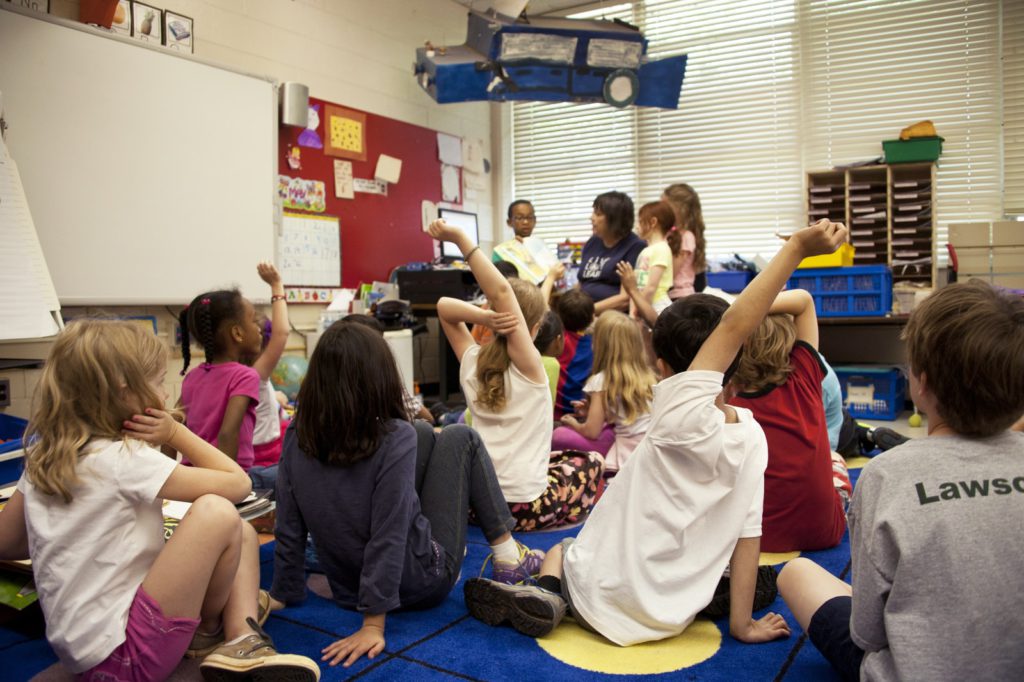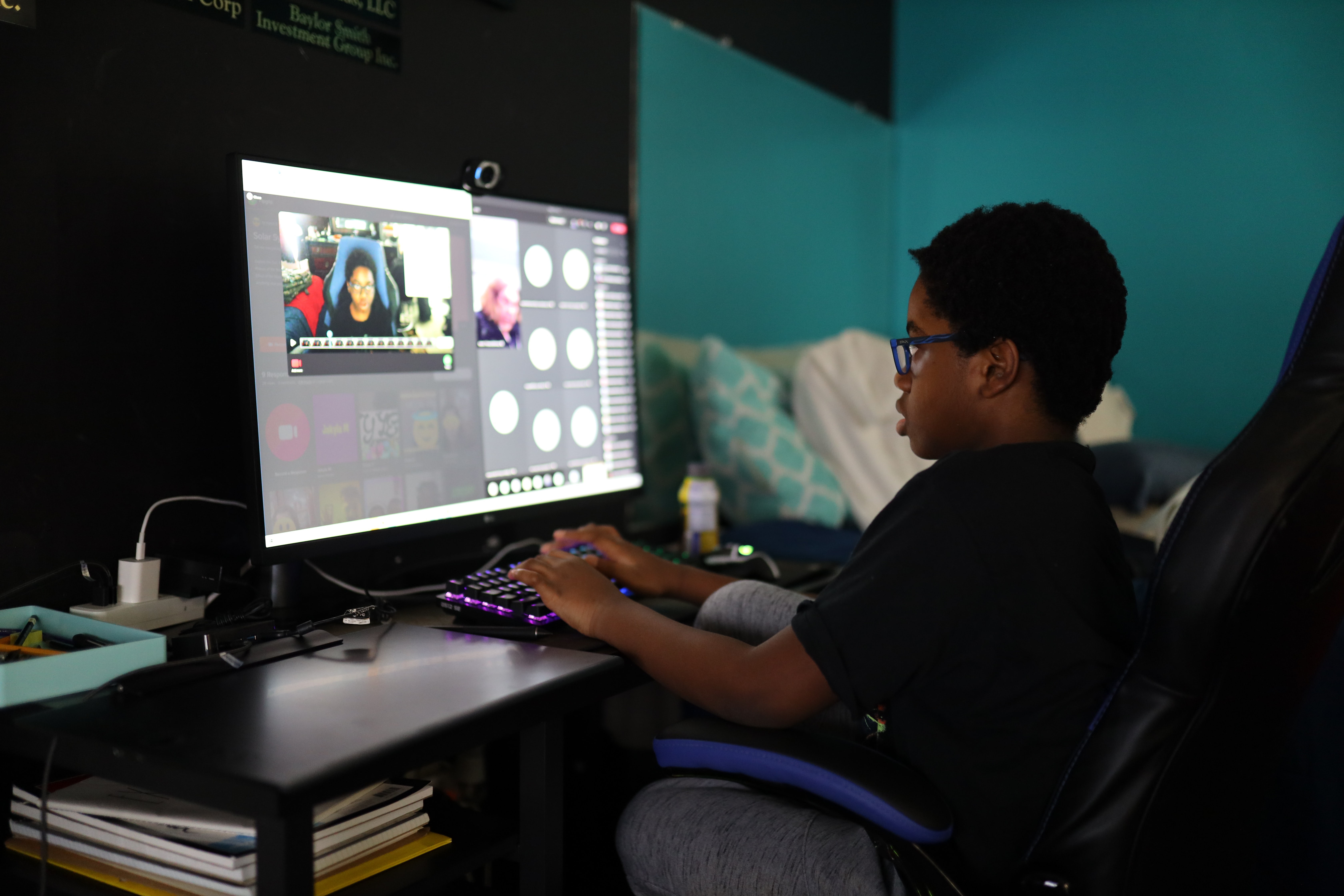
How to Engage Students in Classes
Being an educator is hard work. Many considerations go into keeping classrooms and their students running smoothly. One of the main challenges to overcome is student engagement. Getting a student’s attention and keeping it for the duration of a lesson can prove difficult. Likewise, if students aren’t able to communicate with their teachers, it could affect their progress and growth. So how do you do this? What’s the most effective way to capture your students’ attention?
In this week’s blog, we’ll be providing tips, advice, and surefire solutions to improve your student engagement. We’ll also be discussing different things that may hinder student engagement, as well as possible solutions.

How To Interact With A Classroom
Building a healthy relationship with your students is the first step towards engagement. This process starts on the first day. Teachers should introduce themselves and explain class activities and the lessons ahead. Follow this up by asking each student to introduce themselves to you and the other students. For late joiners or newcomers, repeat these steps so no one is left out.
Once everyone has gotten to know each other, it’s time to dive into classes. At the beginning of every day, teachers should ask the students what they liked about the previous lessons. Also, ask what they disliked, and take notes. Afterward, explain the lesson(s) ahead and set realistic goals and expectations for students.
During classes, it is important to always be proactive when it comes to student engagement. Don’t wait for students to ask for help. Many students will be shy, uncomfortable, or unwilling to do so. Always keep an eye on class dynamics. Look for signs of boredom, confusion, frustration, or lack of attention. Being helpful and open will go a long way to building trust with your students. Some good examples of proactive engagement can look like this:
- “Can I take a look at your project? Wow, this looks great! Maybe you can use this element to improve it even more.”
- “I see that you’re having some trouble with the lesson. Can you show me what’s giving you a hard time?”
- “What’s your favorite part of the project you’re working on so far?”
When asking your students questions, it’s important to be very specific. General questions will be met with general answers. “How is it going?” will usually be answered with “good.” Always be as specific as possible and try to focus on one element or topic at a time.

Breaks
Breaks are an important part of classes. They can also be used to further engage with students. Be sure your students have adequate break time during the spread out across lessons. Don’t forget to encourage students to stay hydrated as well. Make breaks fun with a game or activity. Here are some engaging ideas to try during breaks:
- Stretching
- Trivia
- Draw your favorite character
- Scavenger hunt
- Short story
- Show a short educational video

How Different Factors Affect Student Engagement
Due to the diverse nature of education, some factors may affect student engagement. Engagement in online classes can differ from in-person classes. Below, we’ll talk about common factors and offer solutions to help with engagement.
In-Person Classes
Interacting with students in person often offers the best chances at student engagement. The ability to communicate has huge benefits for engagement. The challenge here for educators is being able to read the room. Try to pick up on subtle signs that a student may need help. Remember, being proactive is the best strategy when it comes to engaging students. Thankfully, in-person classes make it easier to pick up on class dynamics. Use this to your advantage.
Online Classes
Since the advent of Covid and its difficulties, online classes have become ever more popular. Students, teachers, and parents have shifted towards virtual classrooms in favor of the safety and convenience they offer. While there certainly are advantages to online classes, they do not come without certain difficulties. A few points are up for discussion here.
- The methods used for online classes can differ from in-person classes. Being good at in-person classes doesn’t directly translate to being good at teaching online classes. Training for online learning improves student engagement. It should be a priority for instructors and teachers.
- It is harder to pick up on class dynamics since communication is done through the internet. Teachers will have to pay closer attention to students.
- Students may sometimes feel isolated during online classes. Teachers should focus on engaging their students and pay close attention to their needs. Promptly addressing students’ problems will improve their experience.
- Classroom size is an important consideration. It should have enough students so that no one feels lonely, but not too many that a teacher has trouble addressing each individual’s needs. It’s a delicate balance (this point goes for other environments too, but is especially important for online classes).

Short Weekly Classes
With short classes (e.g. 1 hour once a week), time spent with your students is limited. Teachers should make the best of this time by being memorable with their student engagements. Leaving a lasting positive impression will help students remember you. Likewise, make a note to remember little things about students. Show them that you’re listening, even if you only communicate once a week. With these tips, engagement should improve.
Week-Long Camps
Tech and Coding camps are very popular during the summer months. They can run anywhere from 2-6 hours a day, for 3-5 days. Camps are held either in person or online. The key to success is to sort your students according to their knowledge. Camps only last for a relatively short time. If you put students together with big gaps in knowledge, it will result in reduced engagement. Thankfully, we have a guide on how to assess students’ knowledge here.
Closing Thoughts
The main takeaway from all of this discussion is this – Teachers and educators must be proactive when engaging students. Taking an active approach instead of a passive one will yield better results.
When thinking up ways to engage students, be creative. Come up with fun ideas that your students will enjoy. A little effort goes a long way.
Questions and Contact
If you’d like to know more about us and what we offer, or have more in-depth questions or feedback about this blog post, feel free to contact us at info@gobrite.io or 425-665-7799 and we’ll be happy to get back to you.
We hope you’ve enjoyed this week’s blog post!
- Popular Kids Education Platforms Review - February 10, 2023
- Pros and Cons of Opening a Kids Coding Franchise - January 31, 2023
- How can coding help kids reduce screen addiction - January 30, 2023